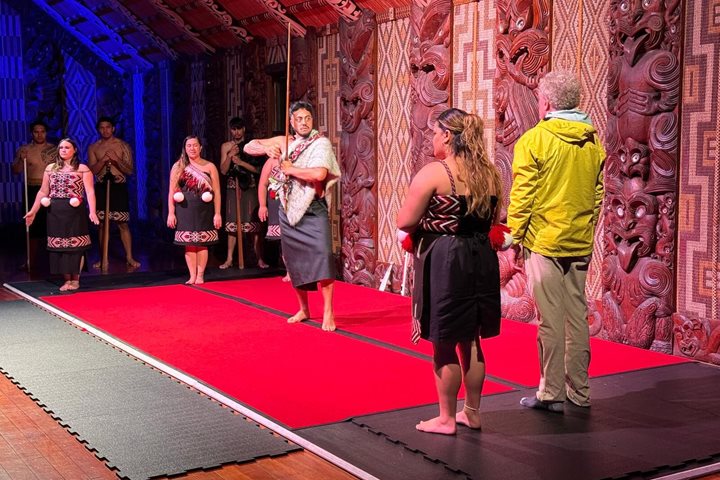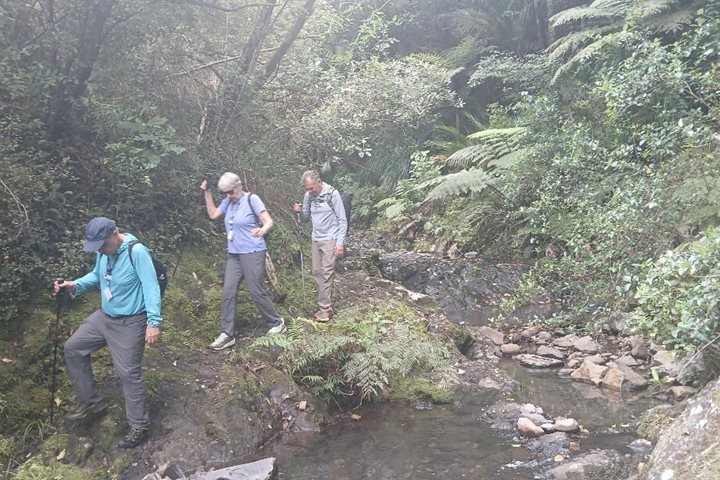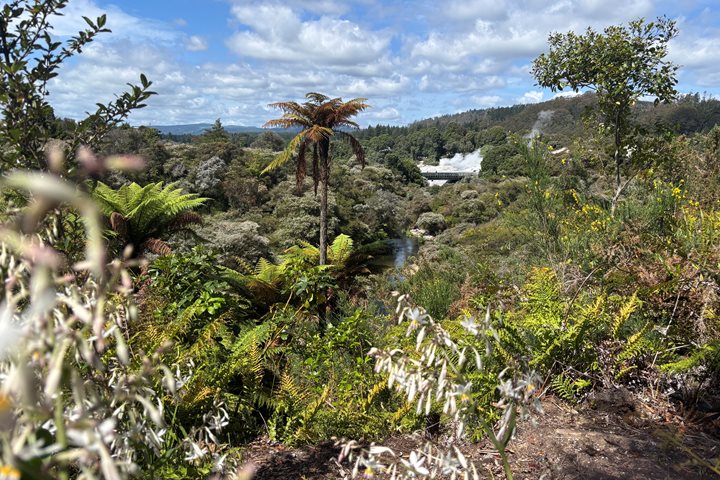With the winds and seas in our favor, National Geographic Orion enjoyed a smooth and efficient passage from Napier, on New Zealand’s North Island, through Cook Strait to Abel Tasman National Park to begin our exploration of the South Island. Located between Golden Bay and Tasman Bay, this is New Zealand’s smallest national park, one of its most popular, and treasured for its beautiful coastline, sandy beaches, and excellent hiking tracks. Archaeological surveys indicate that this region of the South Island was seasonally occupied by Māori about 700 years ago. Middens, pits, pa sites, and farming terraces provide evidence of their life along the coast, gathering food from the sea while keeping a sharp watch out for potential invaders.
Native forest across the region was cleared to create pasture and agricultural fields starting in the 1850s. As these activities, as well as quarrying and logging, proved unviable, private landowners built beachside holiday homes to enjoy the area’s many recreational opportunities. Threats of a new sawmill and road along the coast invigorated the eventually successful 1930s campaign for national park designation. The park is named for Abel Tasman of the Dutch East India Company, who sailed into the area in 1642, interacted with the local iwi, and departed without having set foot on New Zealand soil. It was established in December 1942, 300 years to the day since Tasman’s visit.
This afternoon we transferred from the ship to a golden beach in Anchorage Bay for walks to the Pitt Head Lookout and Te Pukatea Bay. A chorus of cicadas, plus those birds vocal enough to be heard over the cicadas, welcomed us into this first glimpse of a South Island forest. Permitted to restore naturally following the conclusion of farming, Abel Tasman National Park’s forests vary in composition depending on slope, exposure, and direction. Both kānuka and mānuka are abundant, ecologically important at early stages in regeneration because they stabilize soils and offer valuable bird, lizard, and insect habitat. Black beech, tree ferns, and numerous shrubs filled the understory. Our knowledgeable local guides shared historical stories and ethnobotany insights as we hiked. Bow-riding common dolphins and stunning bioluminescence add further excitement to the day!







